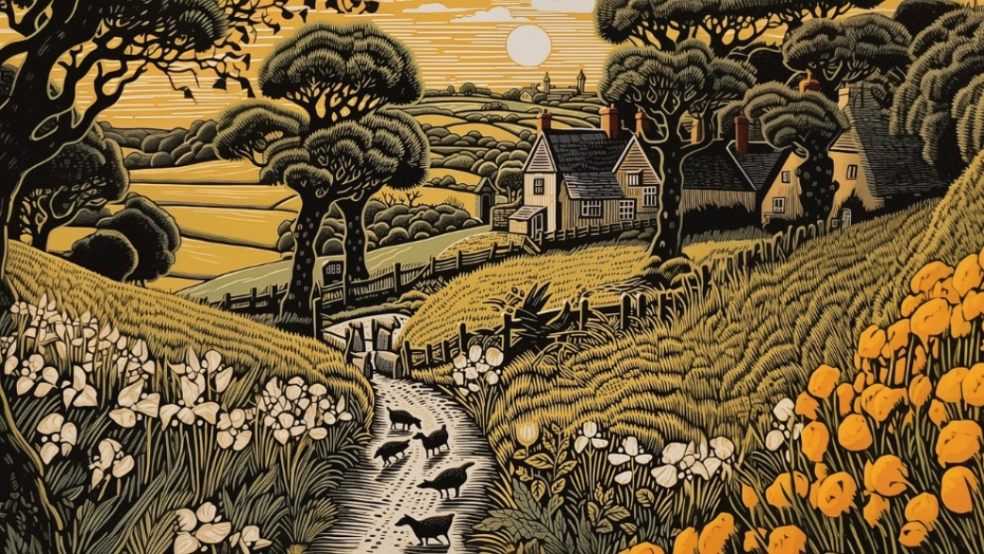
Creative Texturing Techniques in Linocut Printmaking: Enhance Your Artistry with Innovative Methods
Creative texturing techniques in linocut printmaking can transform simple designs into extraordinary works of art. Artists have embraced these methods for centuries using a range of budget friendly lino cutting tools, adding depth and interest to their pieces. By mastering different techniques, one can elevate their linocut prints beyond conventional limits.
Artists can utilise various tools and practices to create textures that enhance their linocut pieces. This art form not only has a rich history, dating back to ancient China, but it also allows for innovative self-expression in modern printmaking. The excitement comes from experimenting with different techniques that can yield surprising and beautiful results.
Key Takeaways
- Learning the right tools enhances definition and creativity in linocut art.
- Understanding preparation can improve printing quality and texture.
- Mastering various printing methods can lead to diverse effects in linocut prints.
Essential Tools for Linocut Printmaking
Having the right tools is crucial for successful linocut printmaking. The choice of materials directly affects the ease of the carving process and the quality of the final print. Below are key tools that every printmaker should consider.
Choosing the Right Linoleum
Linoleum blocks are essential for linocut printmaking. They come in various thicknesses and sizes. Beginners often opt for softer lino, which is easier to carve. Popular options include traditional linoleum and rubber-based types.
Key Sizes:
- 10 x 15 cm: Ideal for small projects.
- 30 x 45 cm: Suitable for larger designs.
One popular brand, Speedy-Carve, offers self-adhesive linoleum that sticks easily to surfaces. This makes it easier to print without slipping. Selecting the right linoleum can influence how well details are captured in the final print.
Gouges and Carving Tools
Gouges and carving tools are vital for detailed work. A basic set typically includes V-shaped, U-shaped, and straight blades. Each type serves a distinct purpose.
Recommended Tools:
- V-shaped gouge: Perfect for fine lines and details.
- U-shaped gouge: Works well for larger areas and curves.
- Straight blade: Useful for clean edges.
A quality gouge allows for greater control. Many artists prefer ergonomically designed handles for comfort during long sessions. Keeping tools sharp is crucial for clear cuts and to reduce fatigue.
Inking and Brayers
Inking is a critical step in linocut printmaking. A brayer, a roller specifically designed for this purpose, is essential for applying ink evenly. They come in various sizes and hardness levels.
Inking Tips:
- Use a hard brayer for finer details.
- A softer brayer can create more texture.
Choosing the right ink also plays a role. Oil-based inks offer rich colour but require longer drying times. Water-based inks dry faster and are easier to clean. Using a glass or acrylic sheet for inking provides a smooth surface to roll the ink evenly.
Preparing Your Linocut for Printing
Preparing the linocut for printing involves careful planning and execution. Key steps include mastering carving techniques, applying textures, and understanding the inking process. Selecting the right paper and ensuring proper registration are also crucial for achieving high-quality prints.
Carving Techniques
When carving a linocut, precision is key. One effective method is to start with the outline of the design, using sharp gouges for clean lines. It is important to apply varied cutting techniques to create depth and texture.
For instance, using a V-gouge can produce fine lines, while a U-gouge can carve out larger areas.
A consistent pressure while carving helps avoid mishaps. This is crucial for maintaining design integrity. Avoid rushing this stage, as careful carving is the foundation of a successful print. Artists can also experiment with different blades to achieve unique effects.
Applying Textures and Depth
To enhance the print, artists can add textures and depth through various methods. By using different carving depths, a linocut can achieve a three-dimensional effect.
For example, deeper cuts will appear lighter when printed, while shallower areas will retain more ink, creating contrast.
Additionally, artists often incorporate fabric or other materials to imprint textures onto the linoleum. This technique can add interest and complexity to the final print.
Another method is using tools like brayers to create patterned textures when rolling ink. These choices allow for personalised and distinct prints.
The Inking Process
Inking a linocut is a critical part of printmaking. High-quality, oil-based inks are often preferred for their rich colours and consistency.
Artists should use a glass or acrylic slab to spread the ink evenly with a brayer. When applying ink, ensure even coverage on the raised surfaces of the linoleum.
Artists should apply a thin layer to avoid excessive pooling, which can lead to smudges. Test prints can also be useful to check the ink distribution before committing to full prints. This process ensures a clean, sharp image on the final print.
Paper and Registration
Choosing the right paper is essential for achieving the desired results in linocut printmaking. Heavy, textured printmaking papers, such as Fabriano Rosaspina, hold ink well and provide a good surface for prints. The choice of paper influences the final appearance, and different papers may react differently.
Registration is crucial when multiple colours or layers are used. To ensure all layers align perfectly, artists often create a registration system using guide marks or templates. This step is vital for complex designs, helping to maintain consistent positioning throughout the printing process.
Printing and Pressing Techniques
Printing and pressing are crucial steps in linocut printmaking that affect the final outcome of the print. The methods employed can enhance detail and ensure consistency across multiple prints.
Using a Printing Press
A printing press is a valuable tool in linocut printmaking. This method allows for uniform pressure, which is essential for achieving clear, crisp images.
The setup usually involves placing the inked linoleum block on the press bed. A sheet of damp paper is then positioned on top. The press handles are turned, applying even pressure.
This process ensures that intricate details are transferred from the block to the paper effectively. Using a printing press also enhances efficiency. It allows artists to produce multiple copies quickly while maintaining high quality.
The grip of the press can be adjusted based on the design's complexity and the transfer desired. By controlling these variables, artists can produce a range of effects, from bold lines to subtle textures.
Hand Burnishing with a Baren or Spoon
Hand burnishing is an alternative to using a printing press. This method uses tools like a baren or spoon to apply pressure manually.
To begin, the artist places the damp paper over the inked linoleum block. Using the baren or spoon, they rub in circular motions, ensuring that pressure is evenly applied.
This technique is especially helpful for achieving finer details that may be lost with excessive pressure from a press. Burnishing is also beneficial for smaller editions or when working in spaces without a press.
It encourages a tactile interaction with the materials, allowing for a deeper connection to the artwork. While this method can be labour-intensive, it provides artists with the ability to experiment with texture and shading in a more hands-on manner.
Frequently Asked Questions
This section addresses common questions about creative texturing techniques in linocut printmaking. Each question provides specific insights into the techniques and considerations involved in achieving effective and unique textures in this art form.
What are the steps for incorporating textural effects in linocut printmaking?
To incorporate textural effects, an artist should first sketch the desired design, focusing on areas where texture will enhance the piece. Next, they cut into the linoleum with various tools, using different depths and angles to create contrast. Finally, applying ink selectively can bring these textures to life during the printing process.
How can one achieve advanced texturing in linocut without any cost?
Advanced texturing can be achieved by using found objects and materials already available. Items like leaves, fabric, or household items can be pressed into the inked surface before printing. This method allows for unique textures without the need for expensive tools or materials.
Which shading techniques can be applied to enhance a linocut artwork?
Shading techniques such as cross-hatching and stippling can be used to add depth. Cross-hatching involves drawing intersecting lines, while stippling uses dots to create a gradient effect. Both methods help to create a more dynamic visual interest in the final print.
What methods are there to create distinctive textures in linocut prints?
Distinctive textures can be created using a variety of methods. Techniques such as layering, using different types of linoleum, or incorporating mixed media can yield unique results. Experimenting with different carving tools also enables artists to create various patterns and textures on the print.
What are the key factors to consider when designing a standout linocut piece?
When designing a standout linocut, clarity and contrast should be prioritised. Choosing a strong focal point makes the design more impactful. Additionally, considering composition and the balance of negative and positive space can greatly enhance the overall effectiveness of the piece.
Can you describe some tips for successfully translating textures into a linocut design?
To translate textures into a linocut design, artists should simplify complex textures to ensure they work well in print form.
Studying how textures appear in other mediums can also be helpful. Regular practice and experimentation with different techniques will also aid in mastering the translation of textures effectively.

















